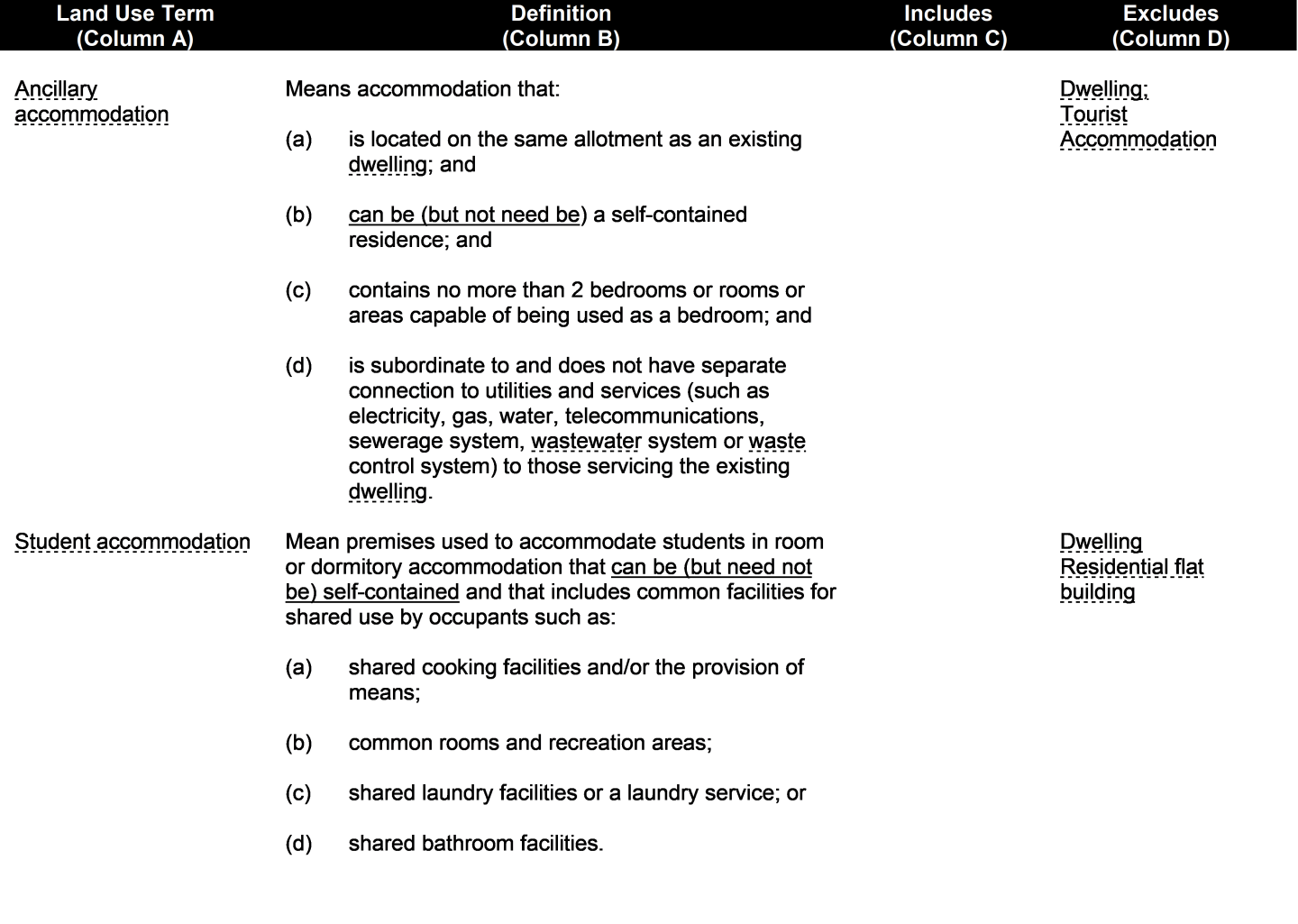LG Alert - Planning Law Update - ancillary accommodation and student accommodation definition changes and dealing with the ‘seriously at variance’ question
4 March 2024
This Alert deals with two important and timely legal updates concerning the assessment of planning consent applications under the Planning, Development and Infrastructure Act 2016 (the Act).
Ancillary Accommodation and Student Accommodation
As of Monday 4 March 2024 the definitions of ‘ancillary accommodation’ and ‘student accommodation’ have been amended, as shown by the underlining below.

These amendments are significant. They mean that relevant authorities no longer need to concern themselves with ensuring that ancillary accommodation and/or student accommodation is or is not ‘self-contained’.
As a result of a multitude of historical ERD Court judgments, what is and is not ‘self-contained’ is always a matter of fact and degree. Accordingly, it can and does result in contention between relevant authorities and applicants.
These amendments are consistent with recent measures taken by the Government to address the current ‘housing shortage’. Relevantly, this has occurred through amendments to residential tenancy requirements to allow ‘granny flats’ to be rented under such arrangements and, more broadly, the stated intentions to encourage greater and more diverse forms of housing in South Australia.
The amendment is on ‘early commencement’ pursuant to section 78 of the PDI Act. For further advice in this regard, please contact us directly.
The ‘seriously at variance’ question
The Supreme Court decision in Geber Super Pty Ltd v The Barossa Assessment Panel [2023] SASC 154 has not been appealed. As a result, the various findings therein continue to impact relevant authorities assessing performance assessed forms of development for planning consent into the foreseeable future.
One query which is commonly raised by Assessment Managers and Assessment Panels is how best to deal with the assessment of a development application against the ‘seriously at variance’ consideration in section 107(2)(c) of the Act.
In this regard, we recommend that the following decision-making processes be adopted to best adhere to the findings in Geber:
- in any assessment report, there should be a specific component dedicated to assessing whether, in the opinion of the relevant authority (including delegates), the proposed development is or is not seriously at variance with the Planning and Design Code;
- the assessment should consider the nature of the proposed development against the relevant Zone, subzones and Overlays and consider, as a threshold question, whether the proposal is so seriously at variance with the Planning and Design Code that it should be refused and the reasoning for the relevant opinion formed;
- the ‘seriously at variance’ assessment should focus on the nature of any proposed land use and relevant performance outcomes concerning the same;
- this assessment need not (and should not) be more than a few paragraphs – it is not a full ‘merits’ assessment of the proposed development. However, as per the Geber judgment, evidence that the relevant opinion under section 107(2)(c) has been formed, is required;
- for Assessment Panels, they should ensure that they undertake separate deliberations as to whether a development application is seriously at variance with the Planning and Design Code, ahead of any ‘merits’ assessment and then resolve whether the proposed development is or is not seriously at variance;
- if a Panel resolves that a development is seriously at variance, it should be refused without further assessment;
- if a Panel resolves that a development is not seriously at variance, it should proceed to deliberations on the merits of the proposed development and then, separately, resolve to determine whether it should or should not be granted planning consent on its merits; and
- Panel meeting minutes should record that the two decisions were made with separate deliberations on each.
The above process ensures that, in the event of a judicial review or other legal proceedings, evidence exists to show that the seriously at variance question was considered separately and distinctly from the merits assessment of a performance assessed development application.
This evidence is important given that judicial review focuses on procedural errors in decisions rather than their merits and that a Panel agenda and minutes form a formal record of how the Panel has considered and determined any particular development application.
If you have any questions, please do not hesitate to contact Victoria Shute on 08 8113 7104 or vshute@kelledyjones.com.au

